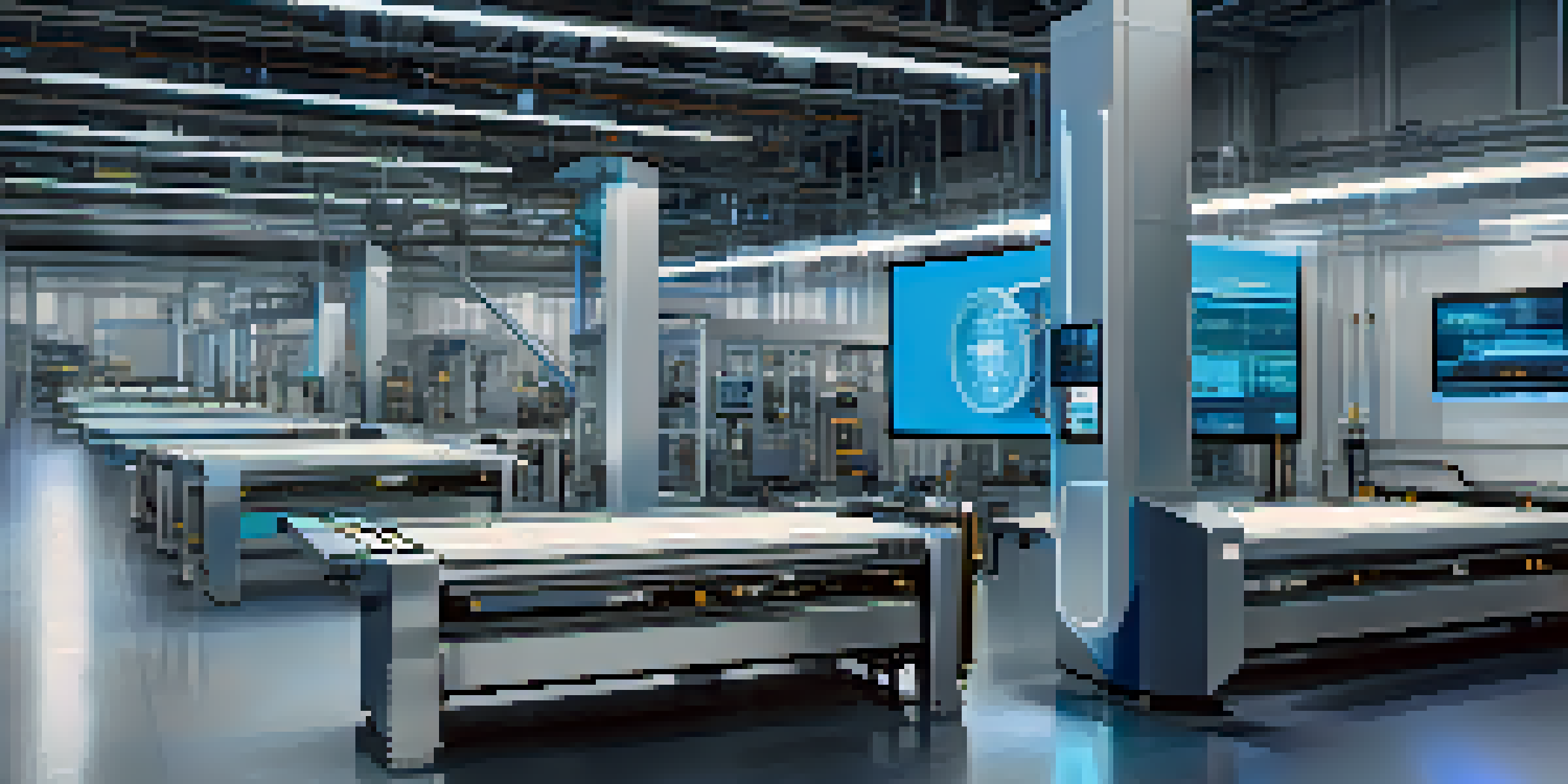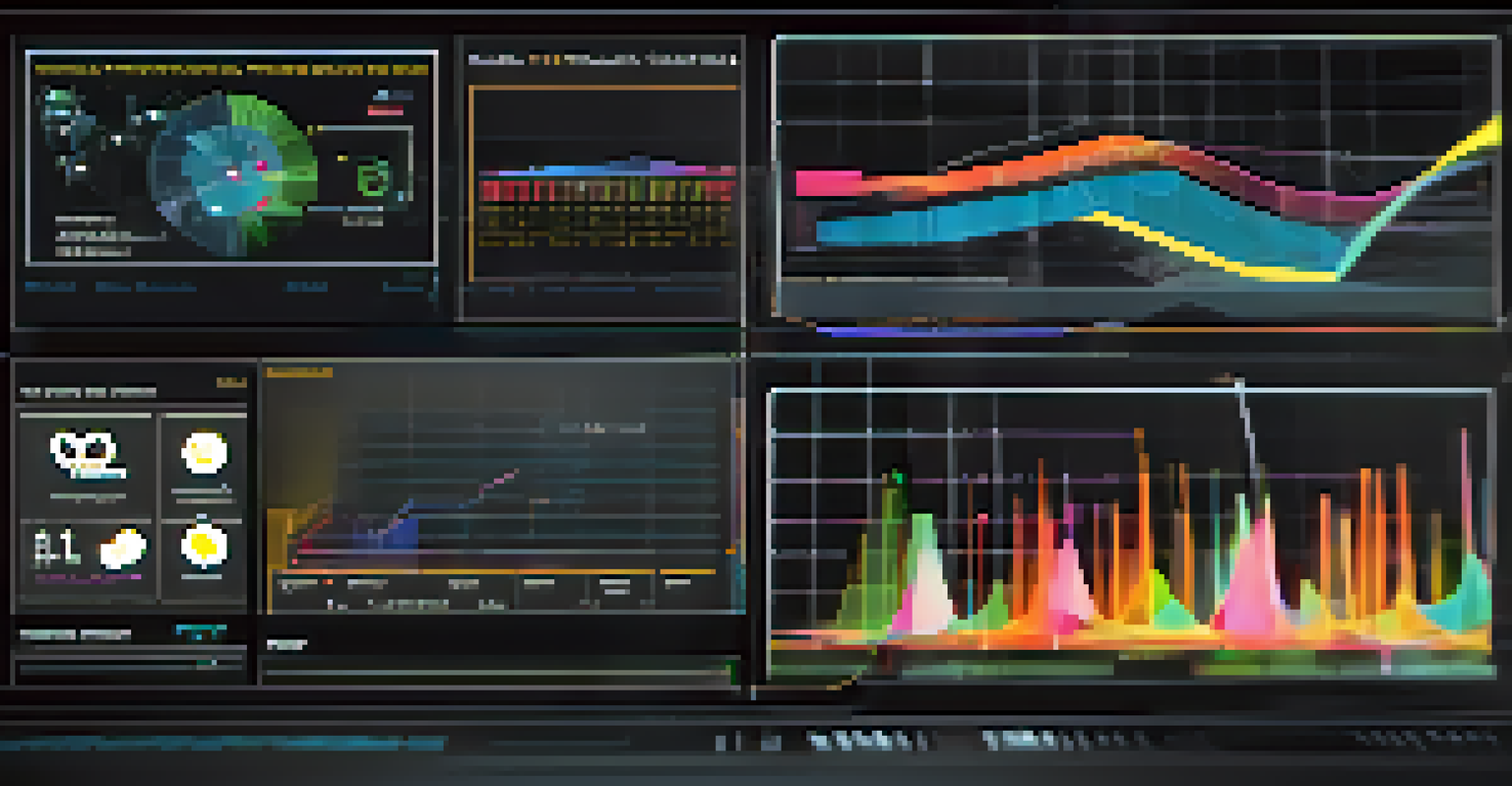Leveraging Digital Twins for Quality Control in Manufacturing

Understanding Digital Twins: A New Era in Manufacturing
Digital twins are virtual replicas of physical systems, enabling manufacturers to simulate and analyze real-world processes. By creating a digital twin, companies can visualize their assets in real time, which helps in understanding how they operate and predict potential issues. This innovative technology is not just a passing trend; it represents a significant shift in how we approach quality control in manufacturing.
Digital twins are not only a mirror of the physical world but also a gateway to a new era of efficiency and innovation.
Imagine having a detailed, interactive model of your production line that allows you to see how each component interacts without stepping onto the factory floor. This level of insight can lead to faster decision-making and more efficient operations. In essence, digital twins serve as the bridge between the physical and digital worlds, ultimately enhancing operational efficiency.
With the rise of Industry 4.0, digital twins have become even more crucial. They allow manufacturers to leverage data analytics and machine learning to improve processes continuously. As we delve deeper into quality control, the digital twin becomes a vital tool for ensuring high standards and reducing defects in manufacturing.
Benefits of Digital Twins in Quality Control
The incorporation of digital twins into quality control processes offers numerous benefits, such as real-time monitoring and predictive maintenance. By analyzing data from their digital counterparts, manufacturers can identify patterns that lead to quality issues before they escalate. This proactive approach saves time and resources while enhancing product quality.

Moreover, digital twins facilitate better collaboration among teams by providing a common platform for data analysis. When engineers and operators can access the same digital model, they can work together more effectively to pinpoint problems and develop solutions. This shared understanding fosters a culture of continuous improvement within the organization.
Digital Twins: A Manufacturing Game-Changer
Digital twins allow manufacturers to simulate and analyze processes in real time, enhancing operational efficiency and quality control.
Additionally, the ability to simulate changes and test their impact without disrupting actual production lines is invaluable. Manufacturers can experiment with different scenarios and see how adjustments will affect quality before implementing them in the real world. This minimizes risk and optimizes processes, ultimately leading to higher-quality products.
How Digital Twins Enhance Predictive Analytics
Predictive analytics is all about forecasting potential issues based on historical data, and digital twins take this concept to the next level. By continuously feeding data from the physical asset into its digital twin, manufacturers can develop accurate models that predict when and where problems may occur. This capability is essential for maintaining high quality in production.
The future of manufacturing lies in our ability to blend the physical and digital worlds seamlessly.
For instance, if a digital twin of a machine shows signs of wear and tear based on its operational data, manufacturers can take preventative measures before a breakdown occurs. This not only keeps production running smoothly but also ensures that the quality of products remains consistent. It's like having a crystal ball that helps you see trouble before it arrives.
Moreover, as more data is collected and analyzed, the predictive models become increasingly refined. Over time, this leads to a more robust quality control process that adapts to changes in production and customer demands. The result is not just better quality control, but also improved overall productivity.
Digital Twins and Real-Time Quality Monitoring
One of the standout features of digital twins is their ability to offer real-time quality monitoring. By syncing with sensors placed on physical assets, digital twins can track performance metrics continuously. This constant stream of information allows manufacturers to quickly identify deviations from quality standards and make timely adjustments.
Think of it as having a quality control inspector available 24/7, ensuring that every product meets the required specifications. This immediate feedback loop is crucial in environments where even minor defects can lead to significant losses. With digital twins, manufacturers can catch problems early, reducing waste and enhancing customer satisfaction.
Real-Time Monitoring Improves Quality
With digital twins, manufacturers can continuously monitor quality metrics, enabling immediate adjustments and reducing waste.
Furthermore, real-time monitoring means that quality control becomes a dynamic process rather than a static one. Instead of waiting for batch testing at the end of production, manufacturers can assess quality at every stage. This shift leads to a more agile production process that can respond to issues as they arise.
Integrating Digital Twins with Existing Systems
Integrating digital twins into existing manufacturing systems may seem daunting, but it is essential for maximizing their benefits. Manufacturers should start by assessing their current systems and identifying areas where digital twins can add value. This strategic approach ensures that the transition is smooth and effective.
For example, companies can begin with a specific production line or process, creating a digital twin of that asset. By analyzing the data and refining the model, they can gradually expand the use of digital twins across the entire organization. This phased approach minimizes disruption and helps teams adapt to the new technology.
Moreover, collaboration between IT and operational teams is key during this integration process. Combining insights from both sides ensures that the digital twin aligns with the company’s overall goals for quality control. With everyone on the same page, the implementation of digital twins can be both efficient and successful.
Challenges in Implementing Digital Twins for Quality Control
While the advantages of digital twins are clear, implementing this technology comes with its own set of challenges. One significant hurdle is the initial investment in hardware and software, which can be substantial. Manufacturers must weigh the costs against the potential long-term benefits to determine if the investment is worthwhile.
Additionally, data management becomes crucial when dealing with digital twins. With vast amounts of data generated, companies need effective strategies to collect, store, and analyze this information. Without proper data governance, the insights gained from digital twins could be compromised, leading to poor quality control.
Future Innovation in Quality Control
Advancements in AI and machine learning will further enhance digital twins, automating quality assurance and transforming manufacturing practices.
Finally, there's the issue of training staff to effectively use digital twins. As this technology is relatively new, employees may require additional training to maximize its potential. Investing in learning and development ensures that teams are equipped to leverage digital twins for quality control successfully.
The Future of Quality Control with Digital Twins
As digital twin technology continues to evolve, its role in quality control will likely expand even further. We can expect to see advancements in artificial intelligence and machine learning that enhance the capabilities of digital twins, making them even more predictive and insightful. This evolution will push the boundaries of traditional quality control practices.
In the future, manufacturers might utilize digital twins not only for monitoring but also for automating quality assurance processes. Imagine a scenario where machines can self-correct based on the data provided by their digital twins, leading to a seamless quality control experience. This level of automation could revolutionize manufacturing efficiency.

Ultimately, the integration of digital twins will foster a culture of innovation in quality control. As manufacturers embrace this technology, they will be better positioned to adapt to changing market demands and maintain high standards of product quality. The future looks bright for those who leverage digital twins in their quality control strategies.